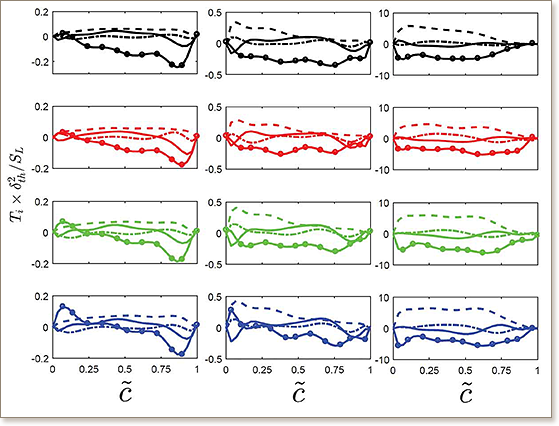

Effects of reaction progress variable definition on the flame surface density transport statistics and closure for different combustion regimes
V. Papapostolou, N. Chakraborty, M. Klein, H. G. Im
Combustion Science and Technology 191 (8), pp. 1276-1293, (2018)

The implications of the choice of reaction progress variable on the performances of the flame surface density (FSD) based mean reaction rate closure and the well-established sub-models of the FSD transport have been analysed in context of Reynolds Averaged Navier Stokes simulations. For this purpose, a detailed chemistry direct numerical simulation (DNS) database of freely-propagating statistically planar H2− air flames (with an equivalence ratio of 0.7) spanning the corrugated flamelets (CF), thin reaction zones (TRZ) and broken reaction zones (BRZ) regimes of premixed turbulent combustion has been considered. The FSD and the unclosed terms of its transport equation have been analysed for reaction progress variables defined based on normalised H2,O2 and H2O mass fractions and temperature. The performances of the closures for turbulent flux of FSD, and tangential strain rate term have been found to be mostly unaffected by the choice of reaction progress variable. However, the well-established existing models for the unresolved tangential strain rate term have been found not to perform well for the cases representing the CF and TRZ regimes of premixed combustion. The performance of a well-established existing model for the combined propagation and curvature terms has been found to be significantly dependent on the choice of reaction progress variable. Furthermore, the surface-averaged value of the density-weighted displacement speed cannot be approximated by the corresponding unstretched laminar flame value especially for the flames in the BRZ regime. Detailed explanations have been provided for the observed behaviours of the FSD based reaction rate closure and sub-models for the unclosed terms of the FSD transport equation in different combustion regimes for different choices of reaction progress variable.